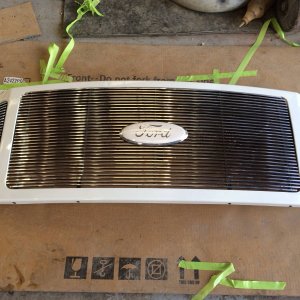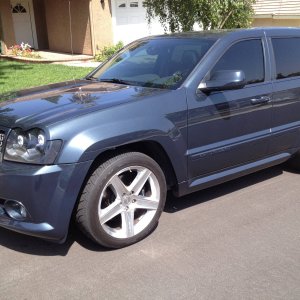The blower can ONLY be a restriction when you place it ahead of the turbo. It can NEVER be a restriction after the turbo unless it is literally displacing less than the engine.
Period.
The turbocharger does not make the engine ingest more air
volume, only more air
mass. The volumetric flow of the engine will never change with boost, only the mass flow. The boost the blower puts on the engine alone will always stay the same whether or not you have atmo or atmo minus 5, atmo plus 5 or atmo plus 25 coming into the blower. Blower doesn't care. Only way I see the blower getting unhappy is with an inefficient charger being overdriven sending superheated air into the blower. But that's why you intercool between turbo and blower. Thankfully on most diesels the intercooling is
already in place, as is the turbo.
At 3000rpm a 7.3 inhales 385 CFM at 100% VE. Figure say 80% VE and you're looking at 308 CFM @ 3000rpm. If your blower moves 308CFM or greater, you are even, or making boost. Done. This will never change. And if the blower inhales say 800 CFM, the engine is NOT moving 800 CFM..... it's still moving 308, but each of those 308 cubic feet of air now WEIGH more. You
compressed the 800 cubic feet down until they were only 308 cubic feet so it would "fit" into your engine of a FINITE volume. The cylinder walls don't swell (appreciably, lol) and the heads don't balloon out, so the volume is NOT increasing, you are
compressing air with the blower. This is important, so that you understand why the blower will never get in the way of the turbo when you place it AFTER the turbo.
Because even though the turbo might be inhaling 2000 CFM, the turbo is
compressing that 2000 CFM, down to the 800 that the blower is taking in. The blower is then compressing it farther to the 308 the engine is taking in. Everybody doing their part. This is the beauty of compounding and doing your compression in stages.
However.....
If you reverse all of this and place the positive displacement ahead of the dynamic unit, all hell breaks loose, as you
now know. Then out come the bandaids, bypass the thing, unload it, clutch it, blah, blah, blah...
You have been given a positive displacement engine, with a dynamic compressor feeding it thanks to the boys at international, and the rest of the known universe for that matter.
Then you add another positive displacement device, but make the mistake of sandwiching a dynamic device between it and the positive displacement engine.
You should have the positive displacement engine, then positive displacement blower, then dynamic compressor and life would be soooooooo easy.
As a side-effect it would no longer be pointless, as the truck would make more, instead of
less power than the stock charger alone as you have it configured now.....
less powerful than stock.
And it would make a LOT more power, because you could run a VERY large turbocharger and lite it off very quickly. The turbo would be sized to the displacement of the BLOWER. You would be sizing the turbo for like a 14L engine!!! And it would jump up on boost exactly as if it were ON a 14L engine!
https://www.youtube.com/watch?v=X9lF8NI9_uk












